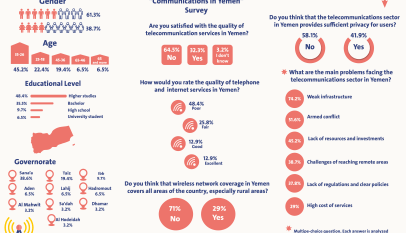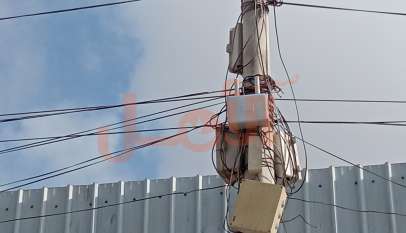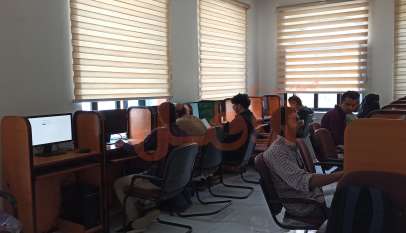Yemen’s Telecommunications Sector: Diverse Services and Notable Stages of Development
Sawt Al-Amal (Voice of Hope) – Alia Mohammed
The telecommunications and information technology sector has emerged as one of the most important modern sectors experiencing rapid development worldwide. It is dynamic and plays a vital role in building and developing the country’s infrastructure. Additionally, it has a significant impact on society as it serves as a fundamental means of exchanging ideas, information, and knowledge. Furthermore, the sector helps reach out to isolated communities, providing them with opportunities and contributing to progress and economic growth.
Origin of the Communication System in Yemen
The telecommunications sector in Yemen has witnessed significant development since ancient times. It began in South Yemen in 1870, with the city of Aden serving as a hub for cables connecting countries in East and Southeast Asia, Australia, New Zealand, the Indian Ocean islands, and East Africa. Aden, with its strategic location, linked these countries with Europe, according to a study titled “Generations of communications and information technology in Yemen: Reality and Ambition” by the author Abdulsalam Ghalib Hasan Alkholidi, an associate professor in the Department of Electrical Engineering.
The study indicated that the southern and eastern provinces of Yemen used the latest British equipment at that time. After independence, some communication systems from Eastern European countries were installed, but the telephone capacity remained limited. In 1989, an outdated international central office was installed in Al-Mu’alla, Aden, by the French company Alcatel. The study also revealed that in the northern provinces of Yemen, in the 1960s and until the mid-1970s, they used “radio systems” based on the tropospheric scatter layer to transmit information between major provinces.
Sana’a City had a central office from the German company Siemens in the Directorate of Al-Tahrir, which remained operational until the early 1990s. In 1990, Yemen’s unification of the north and south led to increased attention to the telecommunications sector and significant progress. In 1996, the Public Telecommunications Corporation and Information Technology was established as the responsible body for regulating and developing the sector.
During that period, digital systems from generations of telecommunications and information technology were introduced, and all provinces were connected through a messaging network owned by the French company Alcatel. Fiber optic technology was introduced in 1992, utilizing high-quality technology from the global company Nokia. In 2001, mobile phone service was introduced in Yemen, and the mobile density began to increase.
According to a research study titled “The Impact of Conflict on the Telecommunications Sector in Yemen,” mobile phone service and the number of subscribers showed mixed performance between 2015 and 2019, achieving positive growth in the sector. Additionally, the number of mobile phone lines increased from 15.7 million lines in 2014 to 18.6 million lines by the end of 2019. The mobile phone penetration rate in Yemen reached approximately 40% by the end of 2018.
Telecommunications Services
The Ministry of Communications and Information Technology is the government body responsible for regulating the telecommunications and information technology sector in Yemen, with its various components. The Public Telecommunications Corporation is the sole operator of landline telephone service and one of the major Internet service providers, alongside TeleYemen.
Undoubtedly, landline phones, mobile phones, and the Internet are among the most prominent modern means of communication that have provided fast and efficient communication between individuals and businesses, rapidly spreading throughout society. This is due to the excellent and user-friendly services they offer in the process of communication and connectivity.
Ahmed Shawki, a telecommunications engineer, says, “The telecommunications sector provides diverse and different services that cater to all the required needs in society. These services are divided into wireless communication, landline phones, and Internet service. Additionally, wireless communication services, which utilize mobile phone carriers, are provided by a total of five companies in Yemen. There are also other services in the sector that use data transmission and are based on linking data transmission between banks, companies, universities, and various entities. This service ensures the security of data and information transmission.”
Internet Services
The Internet service is considered one of the information technology services in the telecommunications sector and is one of the most important sources for individuals and society. It provides an opportunity to access information, knowledge, and various services. Since the mid-1990s, the Internet became available in Yemen in a limited manner, primarily for work purposes, government institutions, and education. With increasing demand for the Internet and the emergence of new technologies, private companies in Yemen started providing Internet service to the general public, making it accessible to everyone.
In 1999, YemenNet, a company, launched the first Internet service in the country. In 2006, the Internet speed gradually improved in Yemen. The second-generation (2G) service was introduced, enabling Internet connectivity through mobile phones.
In 2010, the third-generation (3G) service became available, significantly increasing Internet speed, affecting individuals, companies, and business owners.
Yaslam Wadhah, a telecommunications engineer specializing in Internet services, provided an overview of Internet services and their components. These components include the international gateway, which facilitates communication with the global network, the service provider that offers traffic routing and network connections, the Broadband Remote Access Server (BRAS) that allows customers to access the public Internet, the firewall, and the Authentication, Authorization, and Accounting (AAA) system that protects the network, manages security, and access. Understanding these components is crucial for providing quality and secure Internet services to customers. Yaslam defined the international gateway as the interface between the international Internet and the local network infrastructure of the service provider.
The service allows the exchange of traffic and data between local networks and the global network. The gateway directs incoming and outgoing traffic and data between the international Internet and the local service provider network, applying Internet addressing and necessary security and monitoring rules.
The Service Router is a high-performance routing device used in service providers’ networks to route traffic and deliver data between multiple networks and clients. Its function includes traffic routing and data forwarding between network clients and the service provider’s central facilities, helping achieve high performance and providing stable and fast connections for customers.
Regarding the BRAS, Yaslam explains that it is a device used to secure customers’ connection to the public Internet via broadband access service. It ensures secure connectivity, access control, and account management for users utilizing the service. It also provides IP addressing, implements network policies, and manages flow to improve service performance. The firewall system and AAA system are essential components of Internet security, according to Yaslam.
The firewall examines incoming and outgoing traffic, applies specified security policies to prevent unauthorized access, and protects the network from external attacks. The AAA system, on the other hand, handles authentication, user account management, policy enforcement, verifies user identities, grants appropriate access privileges to services, and manages user accounts.
Difficulties & Challenges
Yemen has recently witnessed challenging political, economic, and security conditions in various Yemeni provinces. This has resulted in significant changes in the telecommunications sector, particularly in the services provided to the community. These changes are a consequence of the damages caused by the conflict, which have affected the infrastructure of the sector in many Yemeni provinces, leading to a lack of funding and investment. Naturally, this has led to a decline in the sector’s level at different times, and the quality of service has deteriorated due to frequent Internet outages. Coverage has weakened and, at times, completely disappeared in most remote areas.
It is worth noting that the telecommunications sector in Yemen, despite its continued operation, still requires significant development to contribute to providing the best services to the community on a wide scale, with high precision and at a lower cost. This can only be achieved through the collaboration and cooperation of relevant entities and the private sector. It necessitates the creation of national plans and strategies, along with the implementation of developmental investments that provide modern and innovative communication services to keep up with the rapid technological advancements. This will improve the telecommunications sector and Internet speed in Yemen.

74.2% of Respondents in the Survey See the Lack of Infrastructure as One of the Most Prominent Problems Facing the Telecommunications Sector in Yemen
Sawt Al-Amal (Voice of Hope) – Yomna Ahmed The telecommunications sector is one of the mo…












